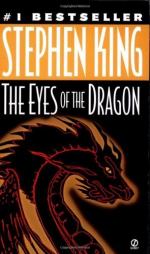|
This section contains 255 words (approx. 1 page at 400 words per page) |

|
King's handling of point of view is distinctive in this novel. The story is told by a colloquial, first person narrator who tells the story from a thirdperson, omniscient perspective: that of the storyteller. This storyteller takes pains to distinguish his role from that of the historian; he gives personal asides, alludes to certain "familiar" events in the future, and encourages the reader to notice Flagg's evil, Thomas' deception and ultimate courage, and Peter's goodness. The narrator's storytelling technique engages the reader by means of open-ended chapters and leading questions, much in the manner of an oral presentation. The storyteller also challenges his audience to either judge or withhold judgment of the characters. This familiar, engaging tone requires the attention and interaction of the listener. The Eyes of the Dragon is not a fairy tale for children, but an oral performance for both children and adults.
The text...
|
This section contains 255 words (approx. 1 page at 400 words per page) |

|




